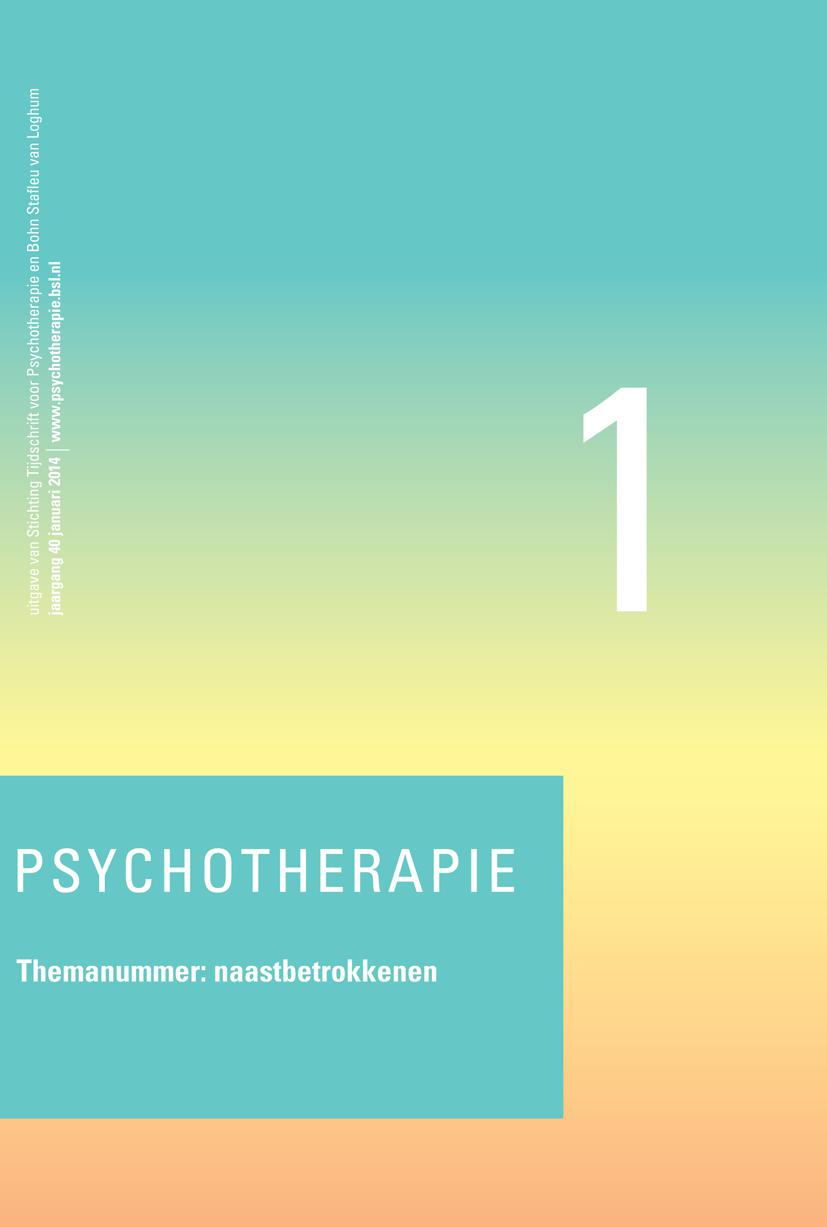The adolescent’s multifaceted environment
Frits Boer
| • |
Adolescence is the period in which the youngster makes the move from the family to the environment. With this step the family
is not being left, but acquires a different meaning. In the environment peers are of special importance. The peers in the
family - the siblings - function as a bridge between both worlds. In this paper I discuss the biological, psychological and
social aspects of the transition adolescence entails. I pay special attention to four themes: parental control, parental psychopathology,
identity development and aggression as useful emotion or problem behaviour. Practical implications are discussed.
|
Unlocking the strenghts of relatives
Els Bransen, Margriet Paalvast Mariëtte Slaats
| • |
In this article we discuss the possibilities of psychotherapists and other mental health care professionals to unlock the
strengths of relatives and other informal carers of patients because of its importance for recovery. To do so, we will argue
that it is necessary for mental health care organizations to formulate and implement an appropriate family policy. Next, mental
health care professionals need more expertise in working with families. Finally, availability of evidence based and attractive
programmes for family support and psycho-education can contribute to this. Besides we argue that government and other financiers
of mental health care pay attention to the continuation of these support programmes in the new constellation of the Dutch
mental health care system.
|
On the role of partners in psychotherapy
Karin Wagenaar Jaap Zoetmulder
| • |
Individual therapy is more effective if the client’s partner is actively involved in the client’s therapy. The partner is
an important attachment figure, and we argue that this powerful attachment bond between client and partner should be used
in individual therapy. In this article we discuss a few examples from outpatient and clinical settings. Finally, we offer
recommendations on pitfalls and challenges in involving the client’s partner in therapy.
|
Who bears the burden of ADHD?
Marieke Römer
| • |
In this article, the author places individual characteristics that fit the classification Attention Deficit Disorder with
Hyperactivity (ADHD) according to the DSM IV in a systemic-relational perspective. The diagnosis can be acknowledging and
apologetical and give hope and a new perspective on change. It can also turn the diagnosed person into a patient. When the
label ADHD becomes the explanation of one’s restless and unfocused behavior, that person is labeled as incompetent. Therapy
is usually disorder-oriented and individual and creates compartmentalisation in the way of thinking about possibilities for
change. By enlarging the scope, individual behavior can be understood in the context of its continuous, longterm interaction
with the environment. By including the important people of the client’s environment in therapy, the problem behavior and its
influence on the various relationships can be looked at from different perspectives. This creates space to tell other stories
and to look with new eyes. In the article, the system competences required for this approach are being examined and schooling
is recommended for all interested psychotherapists.
|
How to engage families and other relatives in psychotherapy?
Erwin van Meekeren Jan Baars
| • |
We argue that talking en cooperating with families and other relatives of patients with mental disorders is essential. It
is an indispensable part of diagnosis and psychotherapeutic treatment. All psychotherapists, with their knowledge of human
problems en processes of change, should be capable of talking with family members. And they should know when to refer to a
family therapist. All kinds of practical interventions are addressed in this article with its focus on daily practice.
|

